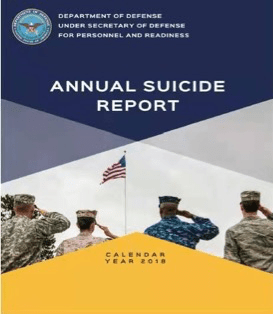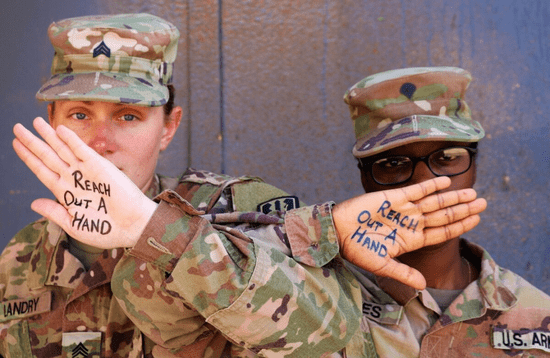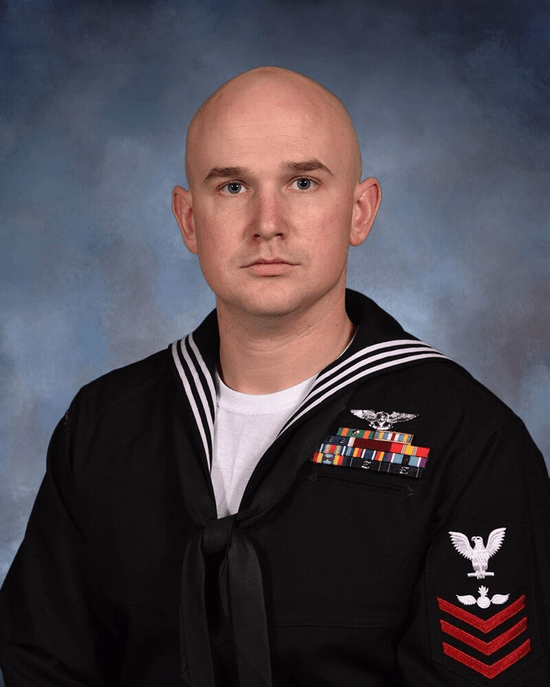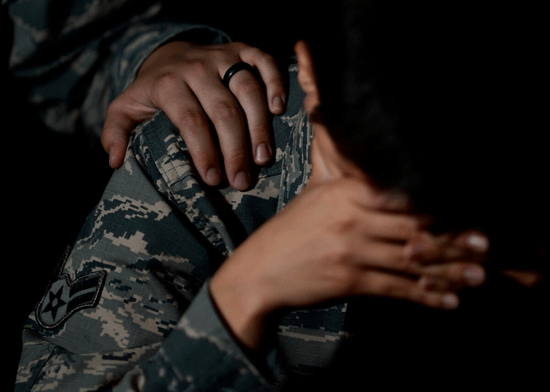On December 4, 2020, the Star-Spangled Banner reported that more than 30 soldiers have died this year at the North Carolina-based Fort Bragg base, half of whom have died by suicide.
This is not the first time that the U.S. media has revealed the suicide problem of the U.S. military this year.
Suicide, far beyond drug, alcohol, drug abuse and his killing, has become the “second killer” of the life of a U.S. soldier (the number one killer is obviously a seemingly endless battle for the U.S. military). According to the Pentagon survey, since the wars in Afghanistan and Iraq, the number of suicides in the U.S. military has reached a record high and is showing an increasing trend.
So, why are more and more American soldiers pointing their guns at themselves?
In order to defeat the “No. 2 Killer”, from the Ministry of National Defense to various services and units, the U.S. military has made a lot of efforts. However, why is suicide diseases “repeated”?
What is the crux of the problem?
Death figures keep setting new records
After September 11th, the United States sent a large number of soldiers to the Middle East in the name of anti-terrorism, opening the wars in Afghanistan and Iraq. Despite the successful killing of bin Laden in 2011, the armed U.S. military was almost helpless in the face of the surge of soldiers’ “suicide”.
In recent years, the number of suicides in the U.S. military has climbed year by year, setting a new historical record. According to U.S. media reports, the number of suicides in the U.S. has doubled since the beginning of the Afghan War in 2001.
According to the British magazine Injury Prevention, the number of suicides by American soldiers increased by 80% after the outbreak of the Iraq war. Since 2006, the number of suicides in the U.S. Army has increased by nearly 40%, and the suicide rate (the proportion of suicides per 100,000 people) exceeds that of the American public for the first time.
According to the statistics of the “New American Security Center” of the U.S. think tank, between 2005 and 2010, the U.S. military committed suicide about every 36 hours; in July 2011 alone, 33 active and reserve soldiers committed suicide; in the first 155 days of 2012, there were 154 suicides within the U.S. military.
The number of soldiers killed in the Afghan war is half higher than the number of suicides, and the total number of suicides has exceeded the number of U.S. troops killed in the Afghan battlefield combined in 2008 and 2009.
In terms of overall trends, the number of suicides by active-duty soldiers in the U.S. military has climbed year by year. From 2014 to 2019, more than 45,000 active and retired soldiers committed suicide, with an average of more than 20 deaths per day, of which the suicide rate of active-duty soldiers increased by an average of 6% a year. The U.S. Department of Defense said that the situation was quite serious:
In 2015, 273 active-duty soldiers committed suicide; in 2016, 280; in 2017, 285; in 2018, 325; and 342 in 2019. In addition to these figures, the U.S. military has at least a thousand cases of suicide attempts or severe self-harm every year.
In January 2019, the Ministry of Defense set up an annual suicide reporting working group, which is specifically responsible for publishing official data on military suicide. In September of that year, the 2018 Annual Suicide Report of the U.S. military was released.
The report shows that out of 325 active service members who committed suicide in 2018, the Army 139, 68 in the Navy, 58 in the Marines and 60 in the Air Force, with a suicide rate of 23 (excluding 135 in the National Guard and 81 in reserve units of various services).

What’s more shocking is that on December 1, 2019, Lieutenant General Scott Stierney, then the commander of the U.S. Fifth Fleet and commander of the Naval Central Command, was found dead dead at home. This is the highest suicide officer in the U.S. military in recent years, which caught the Ministry of Defense and even the entire U.S. military off guard.
On October 1, 2020, the Ministry of Defense released the 2019 Annual Suicide Report. In 2019, the suicide rate of the U.S. military increased to 25.9, far exceeding that of the American public, and the number of suicides in the air force showed a straight upward trend.
In the first quarter of 2020, 85 active-duty soldiers committed suicide in the U.S. military, and figures for the second and third quarters have not yet been released. However, as far as the information released by the U.S. military alone, there should be many. Here, the author only cites three typical cases that appear in the Military Times:


In June, a 21-year-old female Air Force soldier committed suicide in the dormitory of Grande Fox Air Force Base.
In July, a 23-year-old marine corporal committed suicide after shooting someone at a California base;
In October, a 20-year-old sailor committed suicide while guarding at the dock of the USS Roosevelt aircraft carrier base…

According to the U.S. “military” website, affected by the epidemic, the suicide rate of the U.S. military has reached a new high this year. The suicide rate has increased by 20% compared with 2019, and the suicide rate of active-duty soldiers has even increased by 30%.
Suicide of the U.S. military shows four characteristics
Most of the suicides are young white male soldiers.
The 2013 survey of the U.S. Military Mental Health Investigation Team on the Army Forces in Iraq showed that:
Young white male soldiers who committed suicide accounted for nearly 70% of the total number of suicide soldiers;
Most of them are less educated and unmarried;
About one quarter of them committed suicide within 30 days of arriving in Iraq;
Some have a history of depression or other mental disorders before joining the army.
In March, the Military Times reported that more than 90% of suicide deaths were recruits, privates, first-class, and corporals (E-1 to E-4), accounting for 43 percent of active-duty suicides, 39 percent of reserve personnel and 53% of National Guard personnel.
The suicide rate of combat troops is higher.
Soldiers who are repeatedly deployed in Iraq or in the two theaters of Iraq and Afghanistan and have served for a long time are more likely to commit suicide; the number of first-line combat troops commit suicides more than the second-line logistics support force; among active-duty suicides, the army accounts for more than 70% and the marines account for 25%.
Not only overseas, but also military bases in the United States are not “safe islands”. For example, as an American officer and soldier who went to the Iraqi front line to transfer to the Fort Hood military base, it is also one of the places where the U.S. military has committed suicide. From 2003 to 2012, 107 people committed suicide. In 2009 and 2014, the base had two shootings and suicides of military personnel who shocked the United States.

The suicide rate of veterans is on the rise.
According to the RAND company survey, the suicide rate of veterans in the U.S. military is 18.7 on average, and that of veterans aged 20 to 24 is as high as 22.9, four times that of their peers!
After a fierce battle and a life-and-death battlefield brotherhood, veterans are prone to self-isolation and suicide under the guidance of this mentality, one veteran said. According to the survey, suicide is the most common among soldiers returning from Iraq in the first three to six months, most of whom suffer from “post-traumatic stress disorder”. According to the survey, 30% of veterans have a serious history of drug and alcohol dependence.
Method of suicide is mainly the use of firearms.
Mark Kaplan, a researcher at Portland State University, quoted data from the National Violent Death Notification System, saying that 75% of military suicides on the battlefield use firearms, and veterans who return home use firearms to commit suicide by 60 percentage points higher than ordinary people.
According to the data released in the 2019 Annual Suicide Report, of the 498 suicide soldiers (including active-duty, reserve and National Guard personnel) that year, 318, or 63.85%, 134, or 26.9%, were committed suicides; and the rest were alcohol, drug, jumping off buildings, etc.
In fact, for more than 200 years, suicide by soldiers has been common for the U.S. military. However, in recent years, as the security situation in the United States deteriorates, this problem has become more and more prominent, and the U.S. military has had to take more measures.
Protest against suicide, the whole army takes action
At the military level, the U.S. Department of Defense established the “Suicide Prevention Coordination Committee” in 2007 to take charge of the military’s suicide prevention work. At the same time, it also set up a subordinate agency, the “Suicide Prevention and Risk Reduction Committee” to coordinate and formulate suicide prevention plans.
In 2012, the “Suicide Prevention Office” was established. Room” cooperates with government departments, various services, and non-profit organizations to conduct risk assessments on military suicide and propose improvement measures.
In 2005, in order to standardize the work of suicide prevention and control and the working procedures of relevant institutions and personnel, the U.S. military issued a new version of the U.S. military suicide prevention and control manual, which includes the basic points of suicide prevention and control, family members’ suicide prevention and control psychological analysis of suicide prevention and control, etc.
It is the psychological education department of the U.S. military and other relevant departments. Working guide.
In order to improve the mental health examination and treatment services of veterans, in 2007, the U.S. federal government promulgated the Joshua Omweger Suicide Prevention Act, requiring that a suicide prevention consultant be arranged in each medical institution under the Ministry of Veterans Affairs to teach veterans and their families about suicide prevention.
Knowledge, and carry out suicide prevention research, etc. In 2015, the Suicide Prevention Strategy of the Ministry of Defense was promulgated as a programmatic document to guide the military’s suicide prevention work.
At the level of various services and units, a “Suicide Prevention and Control Working Group” has been set up, whose members include the director of planning and training, the director of the unit or subordinate priests, the director of health services, surgeons, mental health officials, heads of criminal investigation agencies, military prosecutors, etc., to coordinate all units to do a good job in suicide prevention and control.
Carry out knowledge popularization training on suicide prevention and control, provide advice for military training and operations to ensure that soldiers have the opportunity to enjoy family life.

Relevant regulations have also been formulated by various services, such as the Army’s Guidelines for Suicide Prevention Planning Leadership Regulations, the Army’s Guidelines for the Prevention of Suicide and Self-harm Behavior, the Army’s Regulations for Health Promotion, Risk Reduction and Suicide Prevention and Control
Army’s Drug Abuse Program Regulations, the Office of the Secretary of Naval Operations Directives, and the Navy The administrative memorandum, the Air Force Suicide Management Work Guide, the Air Force Suicide Prevention Program, the Marine Corps Enduring Health Program Manual, the Marine Corps Combat Stress Control Manual, etc., determine the policies and protocols for suicide prevention, so as to facilitate the standardization and guidance of the work related to the prevention of suicide behavior of soldiers in this service. Director.
For the combat troops, set up temporary psychological services.
In July 2003, the U.S. military formed a service team dedicated to investigating the depression and suicide of the U.S. military in Iraq, composed of psychiatrists and psychologists.
In August 2006, the U.S. military established the “Iraq Multinational Force Suicide Prevention Committee”, whose main task is to develop strategies and methods for the prevention of suicide of the Multinational Force in Iraq, assess the risk factors of suicide among military personnel, and make recommendations for intervention and treatment.
In 2009, the U.S. military set up a “suicide prevention team”. The military staffs every 700 soldiers with a psychologist and several military priests. In order to relieve the pressure of officers and soldiers to serve, the Pentagon will also hold “Suicide Prevention Month” from time to time to encourage active and retired soldiers and their families to work together to reduce the occurrence of suicide and self-harm.

Encourage the active participation of civil society organizations. For example, in Montana, veterans spontaneously organized the establishment of “Extreme Sports as Veterans” to organize veterans with psychological problems to participate in extreme sports, so that they can experience comrades-in-arms and team spirit, and avoid fear and world-weariness due to loneliness.
Strengthen treatment and confiscate firearms
Organization and system alone are not enough. To solve the problem of high suicide, the work must be put into practice on every soldier. In this regard, the U.S. military also seems to spare no effort.
Carry out suicide prevention training.
Since 2009, the Ministry of Defense and the Ministry of Veterans Affairs have jointly held suicide prevention seminars, including suicide prevention guidelines, policy measures, education and training, experience exchange, etc.
The Ministry of National Defense and various services have set up special counseling websites to provide psychological counseling, financial management, employment, education, family relations and other services to relieve the pressure on soldiers.
The Army Command implements a special psychological assistance program aimed at alleviating and overcoming military tensions. Officers and soldiers who go to hot spots must receive a psychological guide to depression, and require field psychologists (including military priests) to take more time to communicate and communicate with officers and soldiers.
During the Iraq war, the Ministry of Defense developed and issued a series of brochures on suicide prevention principles and instructions and procedures, and conducted two hours of suicide prevention training for each soldier stationed in Iraq.
According to the position, the training is divided into five categories – soldiers, non-commissioned officers, officers, priests and mental health workers. Soldiers are encouraged to correct their cognitions in time when suicidal thoughts occur, overcome the shame of illness, and take the initiative to seek help.
Soldiers are reminded of the danger signs of companion suicide and found suspicious. Psychological assistance should be provided to people who may commit suicide immediately, and medical personnel should be required to have the skills to effectively deal with suicide crises and post-suicide first aid.
In recent years, the Marine Corps has arranged study courses for sergeants and corporals to deal with suicidal tendencies and urged them to take more attention to young soldiers.
Open a “Veteran Crisis Hotline”.
In 2007, the New York State Department of Veterans Affairs opened the “Veteran Crisis Hotline” center. Staff chatted and communicated with veterans through computers and phones to help them and their families deal with suicide, family and economic disputes.
According to statistics, from 2007 to 2012, the “Veteran Crisis Hotline” answered a total of 600,000 calls and successfully intervened in 21,000 suicides. In 2010, 1.3 million retired soldiers in the United States received mental health services.

Provide drug treatment.
In order to ease the mood of soldiers on the battlefield and prevent suicidal tendencies, the U.S. medical department put a large number of antidepressants in the battlefields in Iraq and Afghanistan, and the supply is still in short supply.
Some soldiers turned to drugs to relieve their pain, leading to the proliferation of drugs in military camps. According to the army’s 5th mental health consultant team, about 12% of the U.S. military in Iraq and 17% of the U.S. military in Afghanistan take a large amount of antidepressants or sleeping pills every day.
Confiscate personal weapons.
In response to the reality of the proliferation of guns in the United States, according to the regulations of the Department of Defense, each military base has a security policy on weapons owned by the troops in the bases.
If the commander of the base believes that a military member of the base is in danger, he has the right to confiscate the weapons in his personal possession.
Earlier this year, in response to the serious suicide crisis of the U.S. military, then Secretary of Defense Esper said: “I believe that we have the means and resources to do better than civilians.” We can’t let these great young Americans end their lives because of financial stress or the challenges of relationships or anything else.”
It’s beautiful to say, but the reality is far from so good – even if the U.S. military does its best, the suicide trend of soldiers has not improved.
So, what’s the problem?
Why did those young soldiers choose to point their guns at themselves in their prime?
Endless killings and deployments, overwhelmed
The U.S. military reports that the longer soldiers in Iraq and Afghanistan or in other theaters serve, the more likely they are to commit suicide. The lives of the U.S. military in Iraq are in danger at any time.
Roadside bombs, suicide bombings, and cold guns and cold guns of anti-American armed forces threaten their lives at all times. Some people can’t adapt to the bloody scene and tension of the battlefield and choose to hurt themselves or commit suicide. In recent years, soldiers who have repeatedly alternated in Iraq and Afghanistan are at high risk of suicide.
According to a 2008 research report published by RAND, an estimated 20% of soldiers returning from the war zone are traumatized and depressed, with problems such as nightmares, extreme vigilance and emotional numbness.
Military statistics show that 11% of the first-time service members feel depressed, anxious or stressed; 18% of the second-time service members have the above feelings; and more than 27% of the soldiers surveyed during the third or fourth service.
Although the U.S. military has formulated a rotational deployment plan, it has not really been realized for various reasons. Some people have served in the theater for too long to withstand the pressure of war.
The harsh living and combat environment have made the vast majority of soldiers reach their physical and psychological limits.
In September 2019, four sailors on the U.S. aircraft carrier George Bush committed suicide one after another, three of whom committed suicide within a week. Immediately, the navy blocked the social accounts of the four people.
However, according to media reports, many sailors openly complained about the toxic working environment on the aircraft carrier, as well as long working hours, excessive pressure and lack of private time, which put great psychological pressure on the officers and soldiers.

Take the 82nd Airborne Division as an example. The division just ended its nine-month rotation in Afghanistan in January 2020, but was immediately ordered to fly to the Middle East due to the tight situation in Iran.
In June, the nervous division was ordered to be urgently transferred to the mainland of the United States to calm down the large-scale protests caused by the death of black George Freud.
Soldiers are physically and mentally tired and face serious internal and external ethnic conflicts (many of them are themselves victims of internal ethnic conflicts). They have to suppress their own people with live ammunition.
Psychological pressure and resistance is obvious. Many soldiers commit suicide and self-harm to escape tasks.
In July this year, 34-year-old Army non-commissioned officer Andrew Maxano, who served in the 82nd Airborne Division and the “Green Beret” Special Forces, participated in six Afghan military missions and 10 overseas operations, and committed suicide at home in front of his wife and two children.
Maxano has been fighting in the Middle East for a long time. He has won the Silver Star Medal and is known as the live-action version of Captain America. He has proudly said many times that he should make his story into a film.
His family believes that he has been in a state of combat for a long time, and endless killings and dispatches eventually lead to his mental breakdown and suicide.
In addition, the frequent occurrence of forest fires, hurricanes and other natural disasters in the United States also makes the army coping and moving around.
Many military personnel’s normal holidays have been postponed or even cancelled indefinitely, which invisibly increases the suicide rate of soldiers.
Physical and mental trauma amplified by war
War injuries, illness and belated compensation are important reasons for soldiers to commit suicide.
Due to the poor natural conditions and poor sanitary conditions in the battlefield, soldiers usually suffer from skin diseases, diarrhea, acute upper respiratory tract infections and other diseases, most of which will leave sequelae.
According to statistics, the proportion of soldiers injured in the battlefields of Iraq and Afghanistan exceeds 7:1, which is far higher than 1.8:1 and 1.6:1 in the two world wars, reaching the peak in the history of American war.
Soldiers injured on the battlefield suffer unspeakably. Permanent injuries such as brain damage, limb insufficiency, disfigurement, deafness, blindness and even mental disorders will make them miserable for a lifetime.
Many soldiers are unable to work due to disability after returning home. Alcohol and drug abuse have become the spiritual sustenance of some of them. There are even a few soldiers sentenced for robbery, murder, etc.
Not only is it permanent physical trauma, but also serious psychological problems are one of the “killers” that led to the suicide of soldiers.
During the Iraq War, 38% of retired soldiers suffered from serious psychological problems, but only one-seventh received psychological treatment. According to the U.S. military, from 2001 to 2008, the United States deployed more than 1.6 million soldiers to Afghanistan and Iraq, of which at least 320,000 suffered from various psychological problems, including anxiety, depression, nightmares, irritability and inability to concentrate.
At least a quarter of the soldiers who committed suicide have at least one psychological history, about 20% have been diagnosed with mood disorders, mania and other diseases, and 8% have anxiety symptoms.
According to RAND, about 300,000 U.S. soldiers returning from the front lines of Iraq and Afghanistan suffered serious psychological disorders, 20% of whom were explicitly diagnosed with “Post Traumatic Stress Disorder”, Jane. Called PTSD), this disease is relatively common among the war participants.
It is manifested in mental diseases characterized by avoidance and increased alertness, often accompanied by anxiety, depression and fear, and is the main high-risk factors for suicide. Soldiers with PTSD often go to a dead end under the domination of hallucinations, depression, self-blame and despair.

In the Afghan battlefield, officers and soldiers, in order to escape the cruel reality, they always play video games, watch DVDs or lie down at night with wide eyes, and sleep with their heads covered whenever they have time during the day.
A retired sergeant thought, “Every soldier who has been on the front line in the battlefields of Iraq and Afghanistan will mostly turn black and white upside down because of their long-term fear of night attacks and anxiety.
Some people will be sent to the army mental hospital for treatment after returning home.”
Some soldiers had obvious symptoms of mental illness before they died by suicide, but they were still ordered to stay in Iraq or Afghanistan on duty. Some people take antidepressants without the diagnosis and supervision of a professional psychologist, in violation of the U.S. military’s regulations on the cautious use of antidepressants.
Moreover, although according to the relevant regulations of the Ministry of Defense, soldiers with PTSD can no longer be sent to the battlefield, many sick soldiers are still deployed to Iraq again.
Psychological problems caused by serious sexual assault and abuse within the army are also one of the important reasons for the suicide of soldiers, especially young soldiers.
On November 20 this year, CBS reported that through a year and a half investigation into the internal sexual assault scandal in the army, it was basically concluded that the so-called anti-sexual assault system had “collapsed”, that more and more victims were not treated fairly, some of whom were also received death threats, and a few people were under psychologically stressed.
Unable to bear the pain, I chose to break myself. Some victims were kicked out of the army by the hat of “mental illness”, but very few people were tried.
Broken life, family and marriage
Separation, divorce and unemployment are the main family problems faced by soldiers.
According to the statistics of the U.S. Department of Defense in 2007, 55.2% of the active-duty military are married, of which 70.5% are married officers and 52.3% are married. 6.7% of the active-duty soldiers belong to dual-military families; and the number of family members of soldiers exceeds 2 million.
In recent years, in addition to combat, the rescue and relief and humanitarian assistance tasks of the U.S. military have gradually increased. With the global deployment of the army and frequent cross-regional movements, normal family life has been disrupted, and the separation of the two places has existed for a long time.
According to the survey, due to frequent military movements, the average family moves every three years; military wives earn $3 less per hour than local employees’ wives, and the unemployment rate is three times that of the latter (2014); about half of military spouses are temporarily or long-term unemployed.
Long-term family discord will inevitably lead to the worst result – divorce.
USA Today once reported: “In 2004, 3,325 officers’ marriages came to an end, up 78% from 2003 and 3.5 times from 2000. Among the army’s warring soldiers, 7,152 divorced last year, an increase of 28% over 2003.
Army officials said the pressure of war, prolonged separation and difficulty in adapting to family life were the main reasons for the surge in divorce rates.
U.S. military experts said that some soldiers are unwilling to go to the front line because they think that it will destroy their marriage and family. Soldiers and couples have been unable to reunite for a long time, and divorce due to mutual fears and even suspicions have seriously affected the internal stability of the army and the morale of officers and soldiers.
Some soldiers even chose because of the failure of their love life. Choose suicide. According to the 2018 Annual Suicide Report, 40% of the soldiers who committed suicide that year were due to the breakdown of family relations before going to the war zone.
The heavy family burden is also an important reason for soldiers, especially soldiers, to break themselves.
What’s more chilling is that military hospitals lack enough experts, and a large number of wounded soldiers and their families have to endure long queues; some have traveled hundreds of miles to find a suitable hospital and have to make appointments with doctors at least one month in advance; a large number of seriously injured soldiers do not receive effective treatment, and many people have been disabled for life.
According to the survey of the American Association of Disabled People, half of the veterans surveyed took overdose drugs every day, most of them had the habit of drinking or taking drugs, and a quarter of them were unable to take care of themselves.
For families of disabled veterans, except for the need to go through a large number of complicated procedures for veterans to pay for their own travel expenses and accommodation, various alternative treatments for injuries, diseases, care and the purchase of prescription drugs are not paid by the government, and all of them are borne by families.
This is a heavy burden for most disabled veterans’ families.
The lives of disabled veterans have been aggravated by the loss of their financial resources because their families have to give up their jobs to accompany them at home. According to the 2018 Annual Suicide Report, 4.7% of military personnel committed suicide due to economic problems, which showed that they were under great debt pressure and could not be repaid.
It is worth noting that this year’s COVID-19 epidemic is also regarded as one of the causes of suicide by American soldiers.
In this regard, the senior management of the U.S. Department of Defense is unwilling to delve into this, but blame it on the social loneliness caused by the COVID-19 epidemic, which has caused dissatisfaction among soldiers and their families.
Take the 82nd Airborne Division as an example. From 2017 to 2019, the number of suicides was 4, 6, and 4, respectively, and 10 people have committed suicide in the first 10 months of 2020.
The division commander believes that the troops frequently perform overseas missions. After returning to Fort Bragg in the United States this spring, they encountered an outbreak of the epidemic. They were ordered to be quarantined for two weeks without any welcoming ceremonies.
Gyms and restaurants were closed, soldiers were unable to go home to visit their families, their relationship became indifferent to each other, and violent attacks occurred from time to time. The problem of drug abuse is getting worse and worse, and the problem of suicide is even more headache.
On July 22 this year, an officer on the Navy’s dry cargo ship Amelia Earhart committed suicide due to excessive mental stress during quarantine. Senior Defense officials said that the suicide problem of soldiers has coincided greatly with the epidemic at a time point this year.
As the task increases, the pressure on the army will increase, and the number of suicides by soldiers may increase.

In a word, judging from the current situation of the global use of military force by the United States, the security situation facing military personnel is becoming more and more severe.
No matter how organized, no matter how much system and more committed, it is, it seems so pale and powerless in this desperate environment. If the root cause is not cured, more American soldiers will point their guns at themselves in the future.



